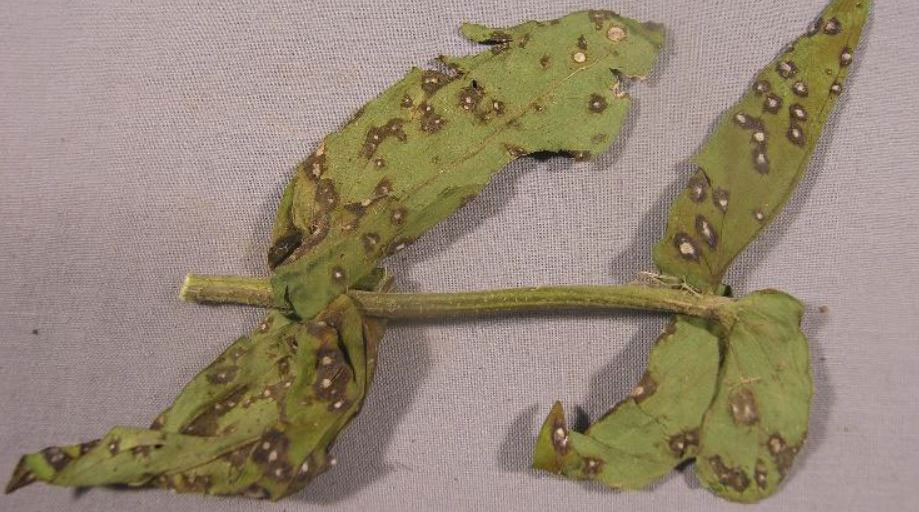Zinnia Cercospora Leaf Spot
Contact
Plant Diagnostician
Phone: (479) 575-2727
Email: ssmith@uada.edu
Jason Pavel
Diagnostician
Phone: (479) 575-7257
Email: jpavel@uada.edu
Office:
University of Arkansas System Division of Agriculture
Cralley Warren Building
Room 16
2601 N. Young Ave.
Fayetteville, AR 72704
Zinnia Cercospora Leaf Spot
Plant Health Clinic Disease Note Issue 26
Sherrie Smith and Jason Pavel

Nothing says summer like a cheerful bed of zinnias. They come in an enormous array of sizes, colors, and petal forms.
Zinnias don’t require much in the way of care except for average fertility, adequate soil moisture, and six hours of sun per day. Despite their easy-care requirements, they can be bothered by several fungal diseases during humid, warm, weather.
What is Cercospora Leaf Spot?
Cercospora Leaf Spot, caused by Cercospora zinniae, produces nearly round, reddish-brown, or dark purple spots with white or light gray centers. Leaves that are heavily infected turn brown and dry.
Alternaria leaf spot, caused by Alternaria zinniae, produces nearly identical symptoms, but may also infect the stems, petioles, and flowers.
How do I control Cercospora Leaf Spot?

Homeowners may use Spectracide Immunox; or Ferti-Lome Liquid Systemic Fungicide; or Ortho Max Garden Disease Control; or Ferti-Lome Liquid Fungicide; or Garden Tech Daconil Fungicide Conc.; or Green Light Fung-Away Fungicide; or Bonide Fung-onil Multipurpose Fungicide; or Green Light Systemic Fungicide; or Ferti-Lome Halt Systemic; or Ortho Rose and Flower Disease Concentrate; or BioAdvanced Disease Control for Roses, Flowers, and Shrubs. All zinnia debris should be removed from the garden at the end of the season.
Take Aways:
• Avoid overhead irrigation.
• Begin fungicide treatment as first sign of disease.
Follow us on Facebook!
This work is supported by the Crop Protection and Pest Management Program [grant no. 2017-70006- 27279/project accession no. 1013890] from the USDA National Institute of Food and Agriculture.